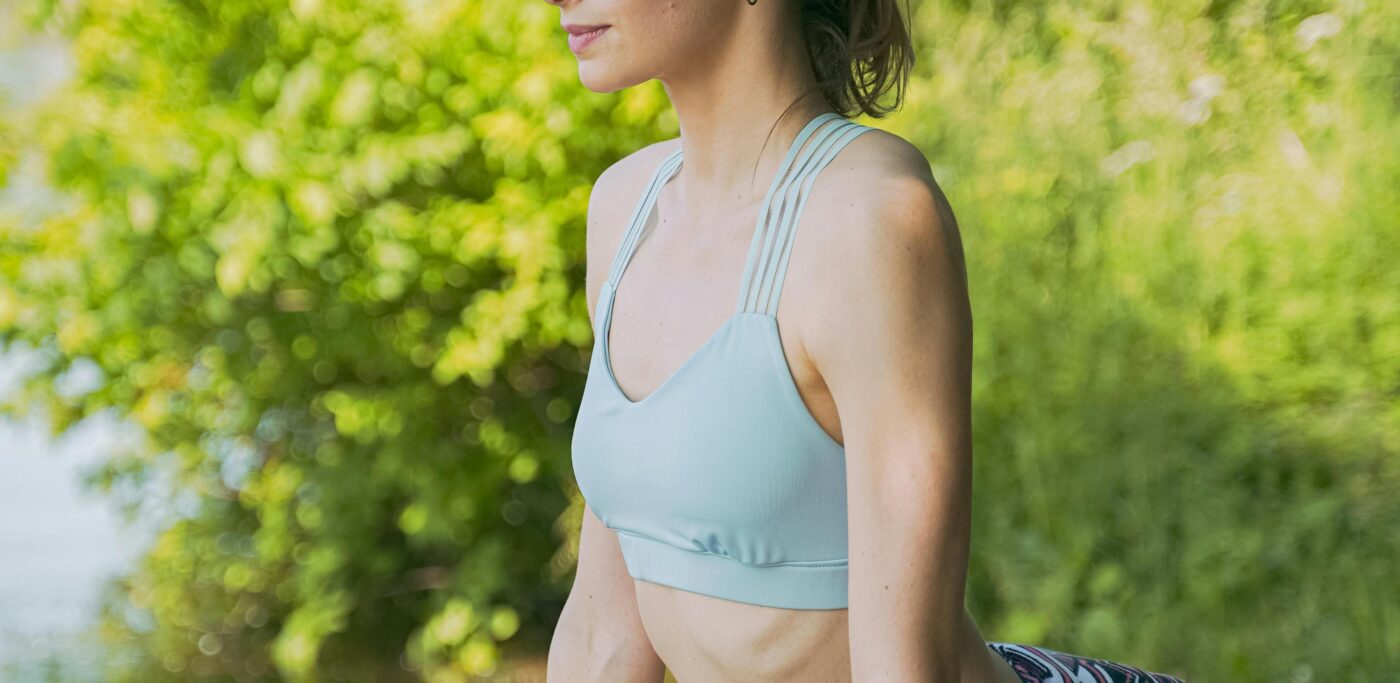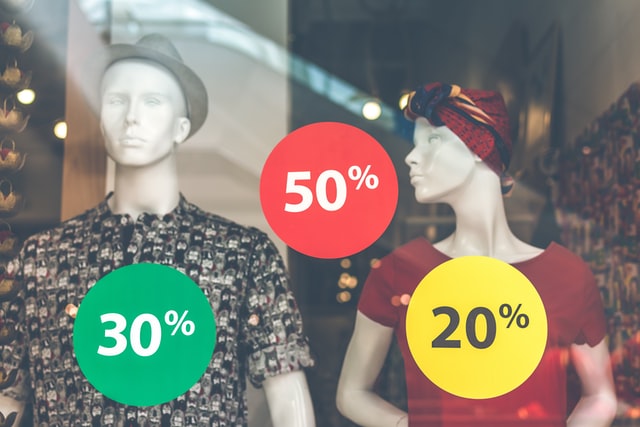Developing long-term business partnerships in the cutthroat B2B apparel sector depends on presenting premium products. Custom sports bras are one category of items that has become really popular. Whether you provide private-label stores, sports teams, or gyms activewear, knowing the best fabrics for custom sports bras is essential. The correct material not only improves the comfort and performance of the garment but also fits the dedication of your business to quality and client pleasure.
Custom sports bras’ fabric choice calls for careful consideration of various elements, including comfort, breathability, moisture-wicking ability, durability, and visual appeal. The best fabrics for custom sports bras will be discussed in this guide together, together with information on each material’s advantages and how they support a quality good. Whether your company is a producer, wholesaler, distributor, or distributor, this knowledge will guide your choice of fabric to satisfy your customer need.

Why Fabric Choice Matters for Custom Sports Bras
Every element of custom sports bras is essential in making sure the finished result satisfies athletes’ and fitness enthusiasts’ needs. Particularly the fabric can either make or ruin a sports bra’s performance. Sports bras are commonly worn in high-intensity workouts or activities, hence the chosen material must carefully balance support, comfort, breathability, and lifetime. High-performance clothing must retain its shape and efficacy after being worn, washed, and stretched repeatedly, so it’s not only about how the bra looks or feels when a consumer initially tries it on. The correct fabric will make sure your sports bra resists wear and tear, keeps its flexibility, and stays generally functional. Conversely, a poor-quality or inadequate material might cause a bra that chafes the skin, sags, or loses supporting ability very fast.
A professionally built custom sports bra must withstand demanding environments. Its goals are to decrease breast movement, ease pain, and preserve breast tissue during exercise—especially high-impact pursuits like jogging or cross-training. Poorly chosen fabrics can lead to irritation, excessive bouncing, or a “heavy” feel once the material is soaked with sweat. These problems can affect an athlete’s performance and eagerness to wear the bra once more. Thus, if you want to create premium sports bras that satisfy the demands of both casual gym-goers and elite athletes, you must first understand the influence of fabric choice.
Key Considerations for Sports Bra Fabrics
1. Comfort
Comfort is crucial in any garment worn close to the skin, and sports bras are no exception. The fabric should be soft and non-irritating to minimize chafing, which is a typical concern when tight garments brush against the skin during intensive activity. Breathable materials promote comfort by enabling air to circulate, helping to regulate body temperature and lessen the risk of overheating. Additionally, smooth, itch-free surfaces are crucial—especially around sensitive regions like the straps, seams, and under-bust band. In summary, if a sports bra isn’t comfortable, it might distract the wearer, ruin their workout, and turn them away from the brand altogether.
2. Moisture Wicking
Exercise causes natural sweating, hence choosing a fabric that efficiently wicks away moisture becomes first importance. Materials with moisture-wicking properties draw sweat away from the skin and distribute it over the surface of the fabric so it may rapidly evaporate. In addition to keeping the person dry, this helps avoid irritation, rashes, and bacterial build-up—all of which could produce offensive smells or diseases. Usually intended with moisture-woking considerations in mind, high-tech synthetic fabrics—such as mixes of polyester, nylon, and spandex—are a common choice for sports wear.
3. Stretch and Support
Any sports bra’s defining quality is how well it supports the breasts during movement while yet providing a comfortable range of motion. Percentage of elastane or spandex fabrics give a flexible stretch that fits the curves of the body. This elasticity guarantees the bra will move with the wearer without becoming constrictive. Still, stretch by itself is insufficient; one also needs proper support, which is usually obtained via the bra’s design and fabric’s stability. Higher spandex content, for example, can produce better stretch recovery, therefore guaranteeing the garment returns to its original form. A bra that works for everything from low-impact yoga classes to high-intensity interval exercise depends on juggling these two components: stretch and support.
4. Durability
Regular cleaning and wear cause sports bras great stress. Lower-quality textiles can eventually lose their elasticity, fade in color, or develop weak places, therefore affecting the support and attractiveness of the garment. Durable materials improve the quality of a brand and save consumers money by offering a longer-lasting good. Investing in strong, high-performance fabrics—such as nylon-spandex combinations—helps to guarantee that your custom sports bras stay in great shape following several wash cycles and exercises. Since a durable sports bra lowers the need for regular replacements, it is also more environmentally friendly over time.
5. Aesthetic Appeal
Although a sports bra’s main objective is use, visual appeal is also crucial—especially for companies trying to distinguish out in a cutthroat industry. The kind of fabric used will affect color, texture, shine, pattern, and even fabric strength. For individuals who desire a sleek, modern design, a sports bra made from a glossy, high-compression fabric can appeal; on the other hand, a soft, matte-finish material may draw consumers who want a more subdued look. Providing a range of finishes, colors, and styles can enable stores to appeal to a wide customer base and assist them to stand out.
Bringing It All Together
Choosing the ideal fabric for your bespoke sports bras means juggling comfort, moisture control, flexibility, lifetime, and style. Every one of these elements helps the final garment to be appealing and performable. Giving top-notch, high-performance materials first priority not only fits athletes’ functional needs but also consumer aesthetic preferences, thereby preserving your brand’s competitive edge in the sportswear industry. Carefully weighing every factor related to fabric selection can help you design sports bras consumers will rely on and return to time and again.
Top Fabrics for Custom Sports Bras
Let’s examine closely the most often used fabrics for custom sports bras and how well they satisfy consumer needs as well as those of B2B companies.
1. Polyester Blends
Custom sports bras among other athletic items are made of polyester, one of the most often used materials. Sports bras would be best suited for this robust, moisture-wicking, shrinking and stretching resistant material. Other qualities including improved stretch, smoothness, or breathability are sometimes added to polyester blends.
- Benefits:
- Moisture-wicking and fast-drying
- Durable and resistant to wear and tear
- Lightweight and breathable
- Holds color well and is resistant to fading
- Best For: Budget-friendly sports bras, everyday wear, and mass-market brands.
Often used for extra stretch, polyester mixes are combined with elastane or spandex. This lets additional flexibility, which makes the sports bras more comfortable during demanding exercises.
2. Nylon
Because of its smooth texture, light weight feel, and durability, nylon is another often used fabric for custom sports bras. High-performance apparel, especially bras, frequently chooses it because it stretches easily, fits well, and resists abrasion.
- Benefits:
- Smooth texture and comfortable feel
- High stretchability and flexibility
- Breathable and moisture-wicking
- Strong and durable
- Best For: Sports bras designed for high-intensity workouts, yoga, and outdoor activities.
To improve its flexibility and support, nylon is sometimes combined with spandex or elastane; so, it is a perfect choice for a form-fitting, supporting design.

3. Spandex (Lycra/Elastane)
Often used in athletics to provide a supporting, body-hugging fit, spandex—also known by its brand name Lycra—is a highly elastic textile. It’s often used with other fabrics like polyester or nylon to boost its flexibility.
- Benefits:
- Excellent stretchability and flexibility
- Retains shape and elasticity over time
- Comfortable fit, moves with the body
- Lightweight and breathable
- Best For: High-support sports bras, compression bras, and performance-oriented activewear.
Sports bras that call for both compression and flexibility generally feature spandex as a major component. For activewear that must move with the body, its five times original size stretching capability makes it a terrific choice.
4. Cotton Blends
Natural fabric with proven breathability, softness, and comfort is cotton. Cotton by itself, however, would not be the best option for sports bras because of its propensity to absorb moisture, which would be uncomfortable during vigorous exercise. Cotton is so usually combined with synthetic materials like polyester or spandex.
- Benefits:
- Soft and comfortable against the skin
- Hypoallergenic and breathable
- Eco-friendly when sourced organically
- Best For: Casual or low-impact sports bras, daily wear, and environmentally conscious brands.
Cotton blends mix the finest of comfort and performance. For low-impact exercise like yoga or daily wear, these bras are ideal.
5. Bamboo Fabric
Bamboo cloth’s softness, moisture-wicking qualities, and environmental friendliness are driving its appeal. Often found in sustainable brands, it gives a rich feel and the support required for athletic wear.
- Benefits:
- Soft, breathable, and naturally hypoallergenic
- Moisture-wicking and antibacterial
- Eco-friendly and biodegradable
- Best For: Sustainable brands, luxury activewear, and consumers looking for eco-conscious products.
High-end companies trying to provide comfort and sustainability in their custom sports bras would find great value in bamboo fabric. For consumers that give environmental products top priority, this is a fantastic choice.
6. Mesh Fabric
Sports bras sometimes use mesh as a panel to improve breathability and airflow. Designs requiring additional ventilation, such bras meant for high-intensity workouts or outdoor activities, often use it.
- Benefits:
- Excellent breathability and ventilation
- Lightweight and flexible
- Adds a stylish look to sports bras
- Best For: Sports bras designed for running, cycling, and other high-impact activities.
Usually used in combination with other textiles, such polyester or spandex, mesh improves the general usefulness and visual appeal of the bra.
7. Neoprene
One synthetic rubber product well-known for durability and water resistance is neoprene. Its compressive qualities make it frequently utilized in wetsuits and sports bras meant for water sports or intensive physical exercise.
- Benefits:
- Compression and support
- Water-resistant and durable
- Retains shape over time
- Best For: Sports bras designed for water sports, cross-training, and heavy-duty workouts.
Neoprene is a great option for high-performance sports bras that require both durability and support.
How to Choose the Best Fabric for Your Custom Sports Bras
When selecting the best fabric for custom sports bras, there are several factors to keep in mind:
Understand Your Target Market
Various materials serve diverse purposes. For instance, those who give sustainability top priority will choose bamboo or organic cotton blends; sportsmen might go for high-performance fabrics like spandex or nylon. Knowing the tastes of your target market will enable you to choose the best cloth for your own sports bras.
Consider Activity Level and Support
Your fabric choice will likewise depend on the degree of support required for the sports bra. Select textiles like spandex or neoprene that offer compression and support for high-impact exercises. Low-impact exercises may call for more soft, breathable materials like cotton blends or bamboo.
Evaluate Comfort and Durability
Activewear is mostly about comfort, hence the fabric should feel soft and smooth on the skin. Sports bras also have to resist frequent washing and wear, hence pick strong materials that will keep their performance and shape over time.
Factor in Customization and Aesthetics
Some fabrics would be more suited for embroidery, printing, or other personalizing techniques. Think on the fabric’s pattern, logo, or design holding power. Customizing fabrics like polyester, nylon, and cotton blends with varying branding styles is simpler.
Conclusion
The sportswear industry depends mostly on custom sports bras, hence selecting the correct fabric is crucial for guarantees of comfort, performance, and durability. Knowing the advantages and disadvantages of various materials helps you to make wise judgments that satisfy your client expectations as well as your company demands. There is a fabric that fits the needs and tastes of your target market whether your search is for more environmentally friendly choices like bamboo or high-performance textiles like spandex and nylon.
Consider elements such activity level, support, breathability, and customizing possibilities when choosing materials for bespoke sports bras. Choosing the best materials will enable you to design sports bras with outstanding comfort and quality, therefore helping you to stand out in the cutthroat activewear industry.
Offering a range of premium custom sports bras as a B2B distributor or wholesaler will help you to satisfy the rising demand for functional, fashionable sportswear and widen your product offers.
FAQs
- What fabric is best for a high-support sports bra?
Excellent alternatives for high-support sports bras are spandex ( Lycra) and nylon since they offer compression and flexibility, which are perfect for high-impact sports.
- Are bamboo sports bras eco-friendly?
Indeed bamboo fabric is biodegradable, naturally hypoallergenic, and environmentally beneficial. For luxurious and ecological sports bras, this is a great selection.
- How can I ensure the durability of custom sports bras?
Select durable materials like polyester or nylon for your fabrics. Make sure the sports bra is also correctly built with robust stitching to resist regular use.
- Can custom sports bras be printed or embroidered?
For printing and embroidery, indeed, polyester, nylon, and cotton combinations are perfect materials. They can be tailored to represent your brand and have designs that hold great integrity.
- How do I choose the best fabric for my custom sports bras?
Think through the tastes of your target market, the degree of support required, and the intended purpose for the sports bras. Select also somewhat comfortable, durable, and easily customizable materials.
Ready to create high-quality custom sports bras? Modenly specializes in providing the best fabrics and manufacturing solutions for your activewear needs. Contact us today to start your next project!

